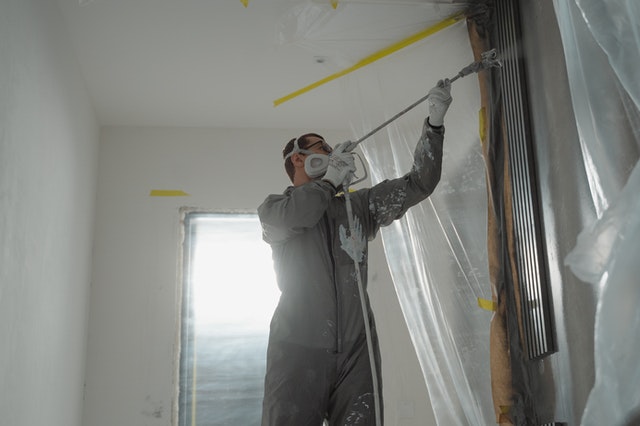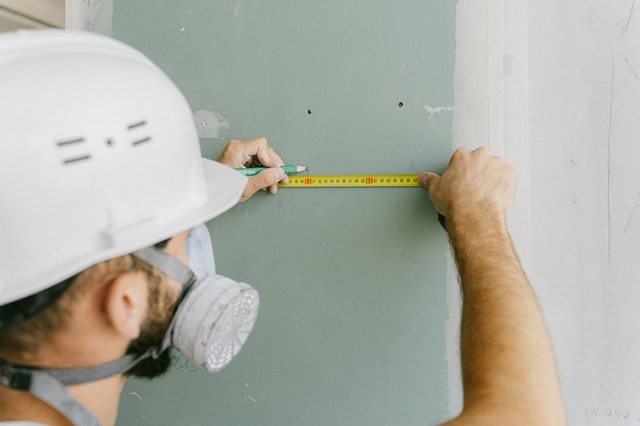Safety When Painting
When it comes to painting your home there might be a lot of options comes in mind which color of paint will be the right one to choose. Not only the choice of paint but also need an safety precautions while painting your dream home. An author “Francis Donegan” written a great article which perceives to the “Safety When Painting” in the book called “Paint Your Home“.
Interior house painting is one of the safest home-improvement projects that you can undertake. But there are still some potential hazards that must be avoided and a number of precautions to take to make sure the job goes smoothly and safely.
Start by reading the label on the can of paint you are going to use. The label not only tells you how to use the product safely but also provides you with first – aid advice. It is important to familiarize yourself with the procedures outlined on the can because they may differ from product to product. Other general safety rules to follow include:
- Keep all containers rightly closed when not in use.
- Keep paints and solvents away from heat and children.
- Keep a list of emergency phone numbers on hand.
Personal protection equipment
Although a painter’s basic uniform includes long-sleeve shirts or sweatshirts, long pants, and gloves, you may require some other safety equipment. The most common pieces of personal protection equipment are:
Goggles These come in handy when you are painting overhead. They should also be worn when you are using chemical strippers or scraping loose paint.
Dust masks These should be worn when scraping away loose paint or sanding wood or paint.

Lead in paint
Until the 1970s, lead was a common ingredient of both interior and exterior paints. We now know that ingesting lead in old paint by either swallowing chips of it or breathing dust from sanding it can result in any one of a number of physical and mental problems, including malfunctioning of the kidneys, hyperactivity, and learning disabilities. Young children, pregnant women, and the elderly are most at risk.
The consumer product safety commission banned the use of lead in paint in 1978. This means that if your house was built or painted before 1978, it probably contains some lead paint.
Lead paint is a problem only if you sand it or if it is peeling or flaking from surfaces. Inside the house, lead paint is usually found on woodwork, doors, and windows. If there is a painted surface in your house in bad condition, have it tested for lead. Contact your local or state board of health for recommendations on where to find a licensed testing laboratory.

If your home has surfaces covered with lead paint that are in bad condition, then contact a lead –abatement contractor to remove the paint. The contractor will either remove the paint or encapsulate it. In either case, the contractor should be able to do the job without exposing you and your family to lead dust. Don’t try to remove the paint yourself, because scraping loose paint will create dust that contains the lead.
It is also a good idea to make sure that young children are screened for the amount of lead in their bloodstreams. Most pediatricians recommend this simple blood test as a matter of course. The test is usually routine for all preschoolers.
Flammable materials
Some paints and solvents are labeled as flammable. The label will state “Warning: flammable” or “Caution: Combustible Materials.” With flammable materials, take these precautions:
- Open all doors and windows to increase ventilation.
- If you are working in a room with pilot lights, remember to extinguish them by turning off the gas. Do not relight pilot lights until the room is completely free of fumes.
- Don’t smoke
- Don’t use electrical equipment that could create a spark
- Clean up spills promptly and dispose of rags and other cleanup equipment safely. Ask your local waste-disposal authority how you should dispose of solvents.
- Close cans of flammable liquids when they are not in use.
- Keep a fire extinguisher handy.
A paint-storage cabinet
Cans of opened paints and solvents should be stored out of the reach of children. The storage cabinet should have adequate ventilation and a lock on the door. If at all possible, mount the fire extinguisher near the cabinet.
Working around electricity
When painting, you will have to remove switch plates, electrical outlet plates, and, sometimes, entire light fixtures. Aside from the times you will be disconnecting wires when removing light fixtures, it is possible to complete the paint job without shutting off the electricity. However, if there are children or pets around, they may be tempted to touch the uncovered outlets. Since electrical outlets are usually located near the bottom of the wall, and therefore an easy target for young fingers, it makes sense to take the precaution of shutting down the electricity to the room in which you will be working.

Turn off the electricity at the junction box by flipping the circuit breaker to the off position or by removing the fuse. Standard safety procedures when working near electricity include:
- If you take a break from painting, check to be sure the circuit is still off before resuming work.
- When shutting off the power, stand on dry planks or on a dry rubber mat. Never stand on a wet floor.
- When shutting off the power, keep one hand in your pocket to keep from touching metal with your free hand. Otherwise, your body could act as a conductor for the electric current.
Safety with electricity
Test before touching
Don’t assume that because one outlet in a room is off, other outlets in the room are also safe. Use a voltage tester to test each outlet. If any outlet is still live, go back to the service panel and find the switch or fuse that turns off the power.
Cap exposed wires
When removing a ceiling or wall fixture, protect yourself and the wires that protrude from the ceiling or wall by capping them with wire nuts or electrical tape.
Safety with ladders and scaffolding
Stepladders and scaffolding are among the most indispensable pieces of painting equipment. Be sure to use them wisely. Protect yourself by always following basic safety rules:
- Never stand above the third step from the top on a ladder. It is easy to lose your balance when standing on the upper steps.
- Never put anything but a paint bucket or roller tray on the top shelf. The shelf is not designed to hold your weight.
- Don’t be tempted to “walk” or jog the ladder along a wall while trying to save the small amount of time it takes to climb down and carry the ladder to its next location.
- Don’t attempt to repair a seriously defective ladder – avoid possible injury by buying a new one.
- Don’t prop up a ladder on an uneven surface with an object such as a rock or a brick. You should create a stable platform by using wide boards.
- Don’t set up a ladder in front of a closed, unlocked door.
- Don’t place a metal ladder near electric wires.
- Make sure the braces on your stepladder are locked down.
- Choose straight planks without splits for scaffolding.
Ladder do’s and don’ts
Brace planks and ladders
C-clamps can help hold planks steady when you use 2-by-10 lumber and two stepladders as a scaffold. In addition, the planks should overlap the steps by at least 12 inches.
Don’t climb too high
Don’t stand any higher on a ladder than the third step from the top. If you stand any higher, you will not have enough support to help you keep your balance. Also, the base of the ladder will be unstable, making it even more likely that you will fall.
Don’t stand on chairs
Never use ordinary chairs to reach high spaces or as anchors for scaffolding. Kitchen and dining chairs are not designed to bear the weight of a standing person.

